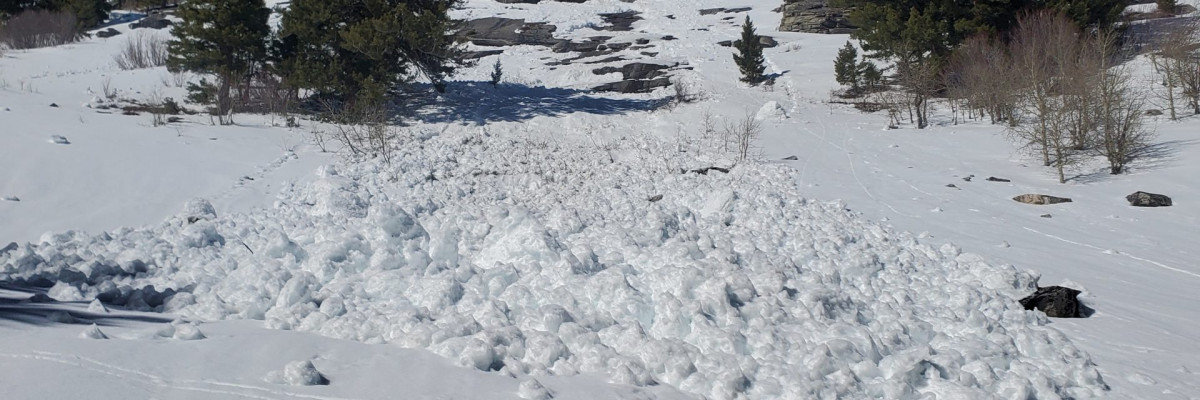The avalanche danger in the west central Montana backcountry is Low this morning and rising to moderate this afternoon.
Good Morning. This is Jeff Carty with the West Central Montana Avalanche Center advisory on Tuesday, March 16, 2021. This advisory is sponsored by the Montana Backcountry Alliance. This advisory does not apply to operating ski areas and expires at midnight tonight. The USDA Forest Service is solely responsible for its content.
Mountain temps dipped to 28º overnight, and are expected to rise to 43º today. Winds will be light out of the southwest.
The last few days really cranked up the heat. Any aspect that catches sun has been heavily affected. As a result, loose wet avalanches were abundant over the weekend. One wet slab was reported and there were likely more that released in isolated areas. Amazingly, north aspects above 6500′ remain mostly dry.
The main hazard right now is wet loose avalanches during the afternoon. These can be seen on all aspects but north and will continue with daytime warming and sun, peaking in late afternoon. Last night’s freeze was somewhat weak with temperatures dipping just below freezing, but most surfaces above 6000′ should have refrozen. However, check for wet snow below the surface. Yesterday in the Rattlesnake certain south slopes were moist to the ground indicating they did not refreeze overnight. When this happens bonds in the snowpack have broken down and liquid water can lubricate weak layers leading to wet slab avalanches. If you can push your pole down through moist snow, or you are sinking in past mid boot, it’s time to move to shadier aspects. Avoid traveling under avalanche slopes in these conditions. Lower elevations where temperatures remained elevated overnight are at higher risk. There is a slight chance of wet slab avalanches. These will be most likely with strong sun warming, cornice fall, or where temperatures remained elevated overnight.
In isolated areas, persistent weak layers linger on north aspects. The weekend’s warmth will have helped bond these, but they cannot be ruled out yet. Propagation was found at Lolo Pass yesterday at the base of a shallow snowpack, and a similar structure exists in isolated areas throughout the forecast area. Shallow spots at ridgetop, around rocks, or where wind-scoured are most suspect. If in doubt avoid convexities and slopes 35º or greater.
Cornices and glide cracks will be with us for the rest of the season. These are two unpredictable avalanche problems. Cornices were sagging yesterday. With continued warmth and sun, the likelihood of cornice fall increases. Give them a wide berth and stay out from underneath. Large cornice fall could trigger lingering persistent slabs. Glide cracks can slowly open as the snowpack creeps downhill, accelerating as with warming. They can also fail unexpectedly, creating full-depth avalanches. Stay off slopes where they are present.
Bottom Line
Wet loose avalanches are likely in the afternoon on south and west aspects. Isolated persistent slab remains a problem on north aspects. Avoid traveling under large cornices and give them a wide berth on ridges. If roller balls show up, move to shadier aspects or head home. Avoid glide cracks.
Carry a beacon, shovel, and probe. Reassess conditions throughout the day and stay alert for signs of instability. Dig pits. Look for red flags.
Upcoming Education Events
Please visit our education page for an up-to-date list of regional educational events and course offerings. Below are a few select events and opportunities to check out.
- March 17th, 6 PM MST | FREE Online Avalanche Awareness Session | Get more details and register HERE
- March 20th | Avalanche Rescue Course | Get more details and register HERE
Public Observations
Thank you to everyone who has taken the time to send in a public observation. Please keep sharing what you find and see while out in the backcountry. You can now text us your observations to (406) 219-5566 when you don’t have time to fill out the observations page.
Ski and ride safe.
























